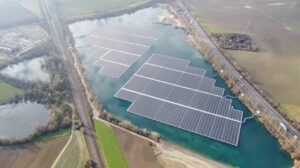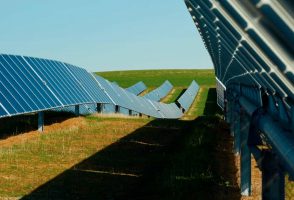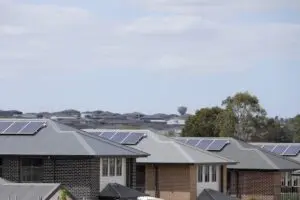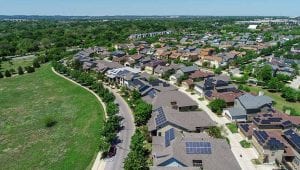Australia’s booming big solar market is not set to slow down any time soon, according to top executives from smart solar tech company Nextracker, despite the various road-blocks currently facing some NEM-connected PV projects.
US based Nextracker, which opened an office in Australia in 2016, this week passed the 3GW-mark of projects installed with its smart solar trackers across Australia’s utility and commercial and industrial solar market.
The company’s president, Bruce Ledesma, and VP of Australia, Peter Wheale, told RenewEconomy this week that since their first Australian project in 2015, things have not slowed down for the company, and show no sign of doing so any time soon.
Best known for its smart solar tracking technology – which the company claims has around a 60 per cent share of the current market in Australia – Nextracker also offers solar farm developers a software solution, called Truecapture.
The software program is used to match the installation of the solar panels to the lie of the land, angling them row-by-row in line with the contours of the ground to reduce the amount of civil works required, and avoid shading where the ground is uneven. It also works to minimise the impact of cloud cover.
According to Nextracker, the addition of TrueCapture’s “intelligent, self-adjusting tracker control system” can increase the typical PV power plant energy output by up to 6 per cent. (You can watch the video below for more detail.)
“It solves both challenges (terrain undulation and overcast skies) with a unique, integrated approach. Over the course of the day, TrueCapture continuously dispatches optimal tracking algorithms to each tracker row, correcting for shading anomalies caused by uneven ground and changing weather conditions.”
Solar tracking technology is all-but the industry standard for solar farms – with the exception of around 10 per cent of projects that need to be fixed, due to weather conditions or other mitigating factors – as an essential addition to boost the levelled cost of energy, or LCOE.
Wheale says that since Nextracker’s first project in Australia in 2015 – the Moree solar farm with FRV and Elecnor in W.A. – the company has deployed its technology at 40-plus projects around the country, and has claimed around 60 per cent of the local solar tracker market.
And he doesn’t see things slowing down.
“The grid clearly is a topic [of concern now] because of the marginal loss factors in certain regions, some of the existing solar plants are having a hard time getting their solar online.
“This has been hard on the EPC market, and the market itself really is probably going through growing pains right now, with curtailment problems.
“But we haven’t slowed down. We’re as busy, if not busier than when we set up here in 2016,” he said.
“We see a very big uptick on the (commercial and industrial) side of things… such as the mining industry… we expect there to be quite a lot of action where a lot of these players are making a pivot toward the off-grid market.
“Anything connected to the NEM might take a little bit of a slow-down, but the market in general overall is going to make a big pivot,” Wheale said.
“Overall we’re very bullish on the Australian market,” added Ledesma, noting that this was despite the fact there were now no incentives from a federal level to support big solar.
“The solar industry does well when there are incentives in the beginning that allow the technology to get to scale and allow companies to optimise the cost structure so that it becomes a competitive solution without that support,” he said.
“In contrast, policies that tend to be unpredictable, or move back and forth depending on who is in power, or shut down overnight, tend to cause trouble.
“We do appreciate policy support – certainly the fossil fuel industry continues to get that support.
“But solar is here to stay,” he added. “The market forces will take over and have taken over in many markets and are driving the success of the industry.”










